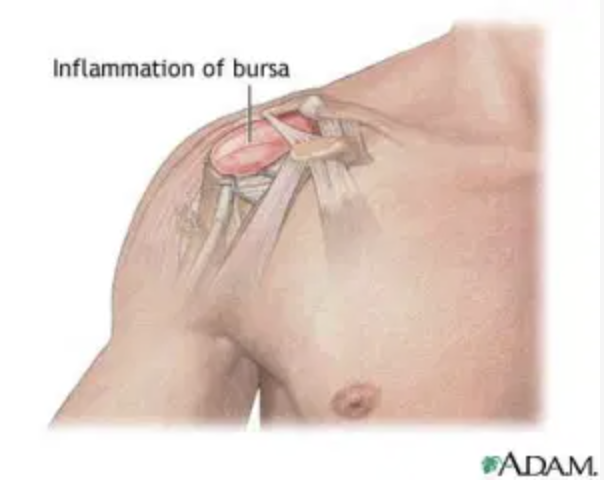Bursitis - Symptoms, Causes & Treatment Options.
Bursitis is the term given to describe inflammation of a bursa. A bursa is a small fluid filled sac that sits between bone and soft tissues (muscles, tendons etc) to act as a cushion, reducing friction and assisting in joint movement. There are many bursas in the joints in the body; when you overuse or injure a joint, the nearby bursa can become irritated and inflamed. When this happens the bursa fills with excess fluid, resulting in pain and altered movement.
Common symptoms of bursitis include:
localised pain and swelling in the area of the bursa
pain that increases with movement of the joint
stiffness
redness or warmth around the affected area
pain at night in the area of the bursa
pain with compression to the area of the bursa i.e. lying on your affected shoulder
Diagnosing bursitis
Bursitis is diagnosed through a thorough subjective and objective assessment process, whereby the patient’s signs and symptoms are considered to determine if bursitis is the cause of their problem. Objective tests used to diagnose bursitis may include ultrasound of the painful area, X-ray of the affected joint, palpation, muscle strength testing and assessing joint range of motion.
Treatment for bursitis
Physiotherapists at Goolwa Physio see many patients present with bursitis, with shoulder and hip bursitis being the most common presentations. Treatment will depend on several factors including the severity of the patients pain, the location of their pain and the patients medical history. Physiotherapy treatment aims to relieve symptoms as much as possible, while also addressing the cause of the problem to reduce the chance of it re-occurring.
Common physiotherapy treatments for bursitis include
heat and ice therapy
joint mobilisations
soft tissue therapy
prescription of appropriate exercises
education to address underlying contributing factors
In severe causes of bursitis, treatment options may also include taking anti-inflammatory medications and/or a corticosteroid injection into the affected bursa. In such cases, prescription of medication and referral for an injection only ever occurs under the guidance of the patient’s doctor.
If you have symptoms that could be related to bursitis, book in to see one of physiotherapists at Goolwa Physio. We can help reduce your pain and get you moving more comfortably.


